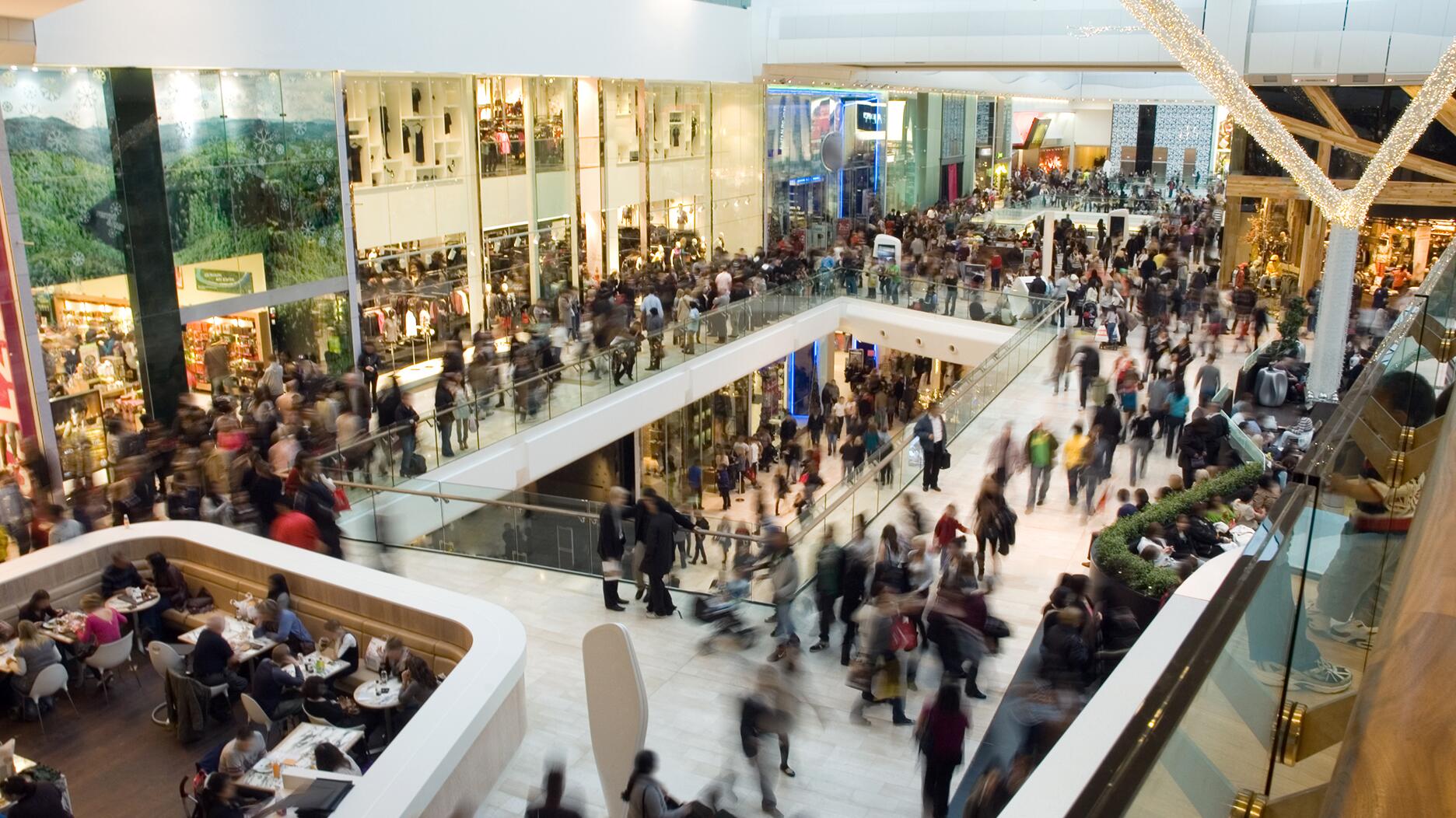Holiday Shoppers Broke a Record This Weekend, Says NRF
From Thanksgiving through Cyber Monday, 200.4 million consumers shopped online and in stores.

From Thanksgiving through Cyber Monday, 200.4 million consumers went shopping, exceeding the organization’s expectation of 182 million and surpassing last year’s 196.7 million shoppers.
“We had a very big weekend,” said NRF CEO Matthew Shay on a media call Tuesday morning, adding that NRF “continues to expect a healthy, strong holiday season.”
NRF, in partnership with Prosper Insights & Analytics, surveyed 3,498 adult consumers from Nov. 22-26 about their holiday weekend spending.
Here are five key takeaways from the annual survey.
Black Friday reigns supreme.
Black Friday is still the king of shopping days with 76.2 million shoppers heading to brick-and-mortar stores, up from 72.9 million in 2022.
Fewer shoppers were in stores on Saturday, down to 59 million from 63.4 million last year.
Similar to last year, 78 percent of Saturday shoppers shopped specifically for Small Business Saturday.
Online shopping gained even more popularity.
Throughout the five-day period, online shopping was the most popular option, chosen by 134.2 million shoppers, up from 130.2 million last year.
Fewer people opted for in-store shopping this year, down to 121.4 million from 122.7 million in 2022.
Black Friday was the most popular day for online shopping, as it has been since 2019, said NRF.
Around 90.6 million consumers shopped online on Black Friday, up from 87.2 million in 2022.
Cyber Monday, the day known for its online deals, saw 73 million online shoppers, down from 77 million last year.
Fewer people shopped on their mobile devices, down to 40.5 million from the record of 45.7 million in 2022, though still above the pre-pandemic level.
About 44 million consumers used their home desktop or laptop to shop online on Cyber Monday, in line with last year’s figures.
The top destinations for holiday shoppers were online (44 percent) followed by grocery stores and supermarkets (42 percent), department stores (40 percent), clothing and accessories stores (36 percent) and electronics stores (29 percent).
Shoppers spent less on average this year.
Shoppers spent an average of $321.41 on holiday-related purchases this weekend, down from $325.44 last year. Of this spending, 70 percent went to gifts.
NRF does not adjust its calculations for inflation.
Through the weekend, 95 percent of shoppers made holiday-related purchases, down from 97 percent last year, but in line with historical levels, said NRF.
NRF said it does not include purchases made over the long weekend that are not holiday related, like home goods.
The organization expects overall holiday spending to reach record levels in 2023, with year-over-year growth of 3 to 4 percent, pushing the sales total to $957.3 billion to $966.6 billion.
While that’s a slower growth rate than it’s seen in recent years, it is consistent with the average annual holiday increase of 3.6 percent seen each year from 2010 to 2019, said NRF CEO Shay during the holiday forecast call earlier this month, adding that trillions of dollars in stimulus sparked “unprecedented” rates of retail spending from 2020 to 2022.
The numbers are still good “on a historic basis,” he said on Tuesday’s call, adding “there’s a difference between moderation and bleak.”
Consumers have been “more intentional and deliberate” with purchases in recent quarters, said Shay.
Clothing and accessories were the most popular gifts.
As for what people were buying, clothing and accessories were in the top spot at 49 percent.
Toys came in second (31 percent), followed by gift cards (25 percent), books, video games and other media (23 percent), and personal care or beauty items (23 percent).
This year was the first time personal care or beauty items made the top five list.
Holiday sales were persuasive.
More than half (55 percent) of holiday weekend shoppers said their purchases were driven by sales and promotions, up from 52 percent last year.
Thirty-one percent said a limited-time sale or promotion “convinced them to make a purchase they were hesitant about,” up from 29 percent in 2022.
Retailers have been responding to the demand for earlier holiday shopping with sales and promotions this season, said NRF.
More than half (55 percent) said they took advantage of these early sales, with 35 percent shopping the week before Thanksgiving (Nov. 16-22).
As of Thanksgiving weekend, most consumers (85 percent) had started holiday shopping.
Nearly half of consumers (48 percent) said they were halfway done with their shopping, leaving opportunity for retailers in the weeks ahead.
NRF defines the holiday season as Nov. 1 through Dec. 31 and has forecast that holiday spending is expected to reach record levels, growing between 3 percent and 4 percent, totaling $957.3 billion to $966.6 billion.
The Latest

The luxury goods company said founder Ippolita Rostagno will remain at the brand’s helm.

Laura Burdese, who joined the Italian luxury brand in 2022, will take on the role in July.

The National Jeweler editors revisit the most noteworthy industry happenings and design trends from 2025.

How Jewelers of America’s 20 Under 40 are leading to ensure a brighter future for the jewelry industry.

Need a gift for the cat lover who has everything? Look no further than our latest Piece of the Week.


It purchased the “Grosse Pièce,” an ultra-complicated Audemars Piguet pocket watch from the ‘20s, for a record-breaking price at Sotheby’s.

The lab-grown diamond grower now offers custom engagement and fashion jewelry through its Kira Custom Lab Jewelry service.

Roseco’s 704-page catalog showcases new lab-grown diamonds, findings, tools & more—available in print or interactive digital editions.

Chandler got his start at Michelson Jewelers and has served as DCA president and CEO since 2001. He will retire at the end of the month.

The boutique is slated to open this week inside Terminal 8, offering pre-owned Rolex watches and more to international travelers.

Sponsored by Digital Monitoring Products

The special-edition egg pendant ingested in a New Zealand jewelry store was recovered after a six-day wait.

Associate Editor Natalie Francisco plays favorites with Piece of the Week, selecting a standout piece of jewelry from each month of 2025.

The “Love and Desire” campaign is inspired by the magic that follows when one’s heart leads the way, said the brand.

Two awardees will receive free tuition for an educational course at the Swiss lab, with flights and lodging included.

Berta de Pablos-Barbier will replace Alexander Lacik at the start of January, two months earlier than expected.

Sotheby’s held its first two jewelry sales at the Breuer building last week, and they totaled nearly $44 million.

Winners will receive free registration and lodging for its fourth annual event in Detroit.

Here are six ideas for making more engaging content for Instagram Reels and TikTok, courtesy of Duvall O’Steen and Jen Cullen Williams.

The honorees include a notable jewelry brand, an industry veteran, and an independent retailer.

Carlos Jose Hernandez and Joshua Zuazo were sentenced to life without the possibility of parole in the 2024 murder of Hussein “Sam” Murray.

Yood will serve alongside Eduard Stefanescu, the sustainability manager for C.Hafner, a precious metals refiner in Germany.

The New Orleans jeweler is also hosting pop-up jewelry boutiques in New York City and Dallas.

Set in a Tiffany & Co. necklace, it sold for $4.2 million, the highest price and price per carat paid for a Paraíba tourmaline at auction.

The jeweler’s “Deep Freeze” display showcases its iconic jewelry designs frozen in a vintage icebox.

Take luxury gifting to new heights this holiday season with the jeweler’s showstopping 12-carat sphene ring.

This year's theme is “Unveiling the Depths of the Ocean.”






























